Landscaping with hedges: 11 ways to beautifully enhance or frame your plot
These clever solutions for landscaping with hedges will transform your space, turning simple garden boundaries into an eye-catching feature
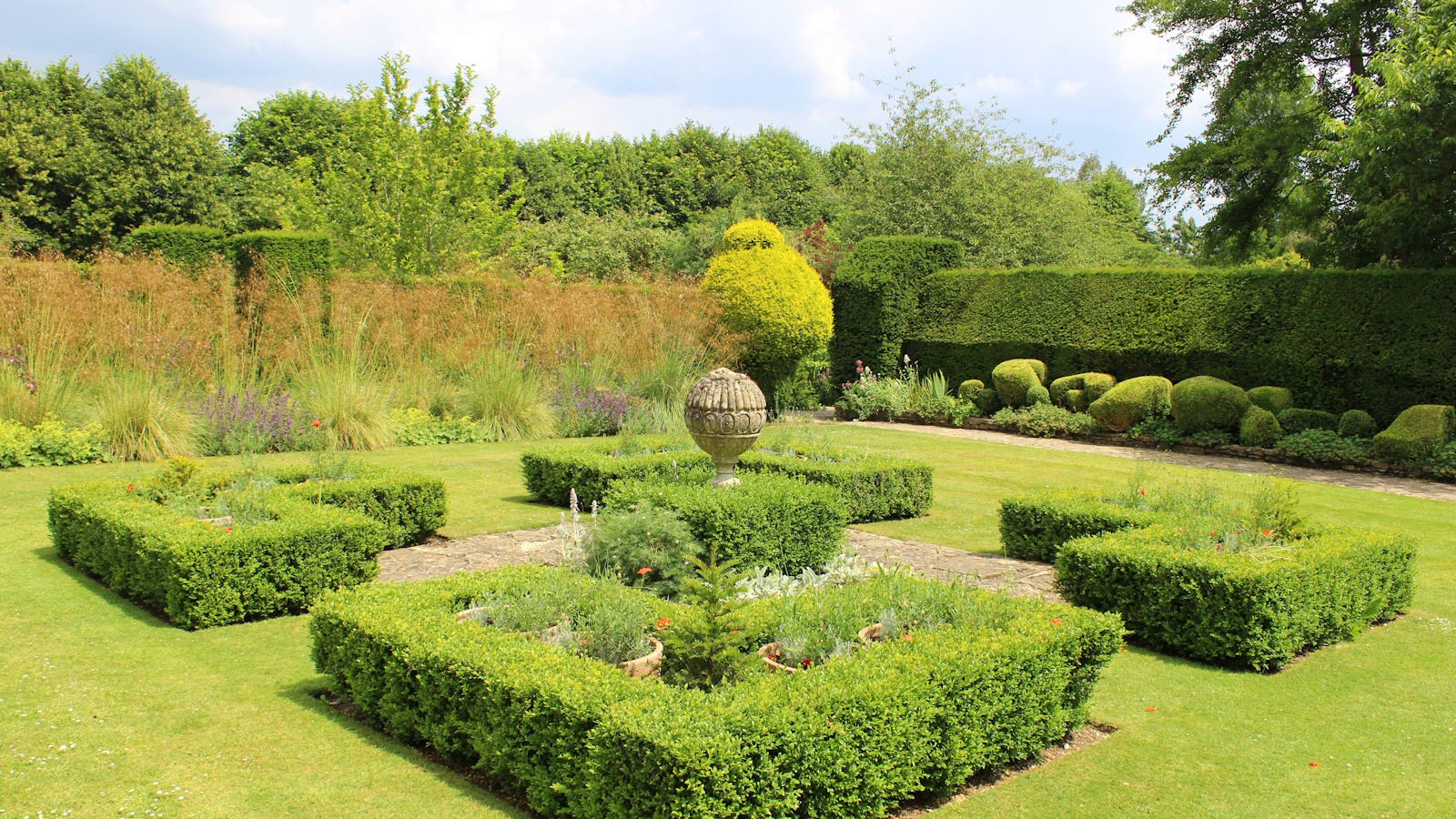

When it comes to adding structure to your yard, landscaping with hedges is an ideal solution. Whether it's a soft natural screen, smart edging for paths and borders, helping to divide up spaces or adding a clipped eye-catching topiary feature, hedging plants are so versatile.
Depending on the variety you choose, hedges can add a dark, dense backdrop that's perfect for colorful borders to pop against, while low hedges are ideal for dividing up spaces and adding definition to break up planting. They are often less expensive than installing brick walls, making them a cost-effective way of creating spaces and enclosures within a garden setting.
It's a good idea to strike a balance between evergreen and deciduous species in your backyard landscaping ideas if you have the space. Evergreens are effective year-round screens, but can look a bit dark and gloomy in winter, while deciduous hedges filter light for most of the year, and offer seasonal color, too. Here, we take a look at 11 wonderful ideas for landscaping with hedges that would work in every style of yard.
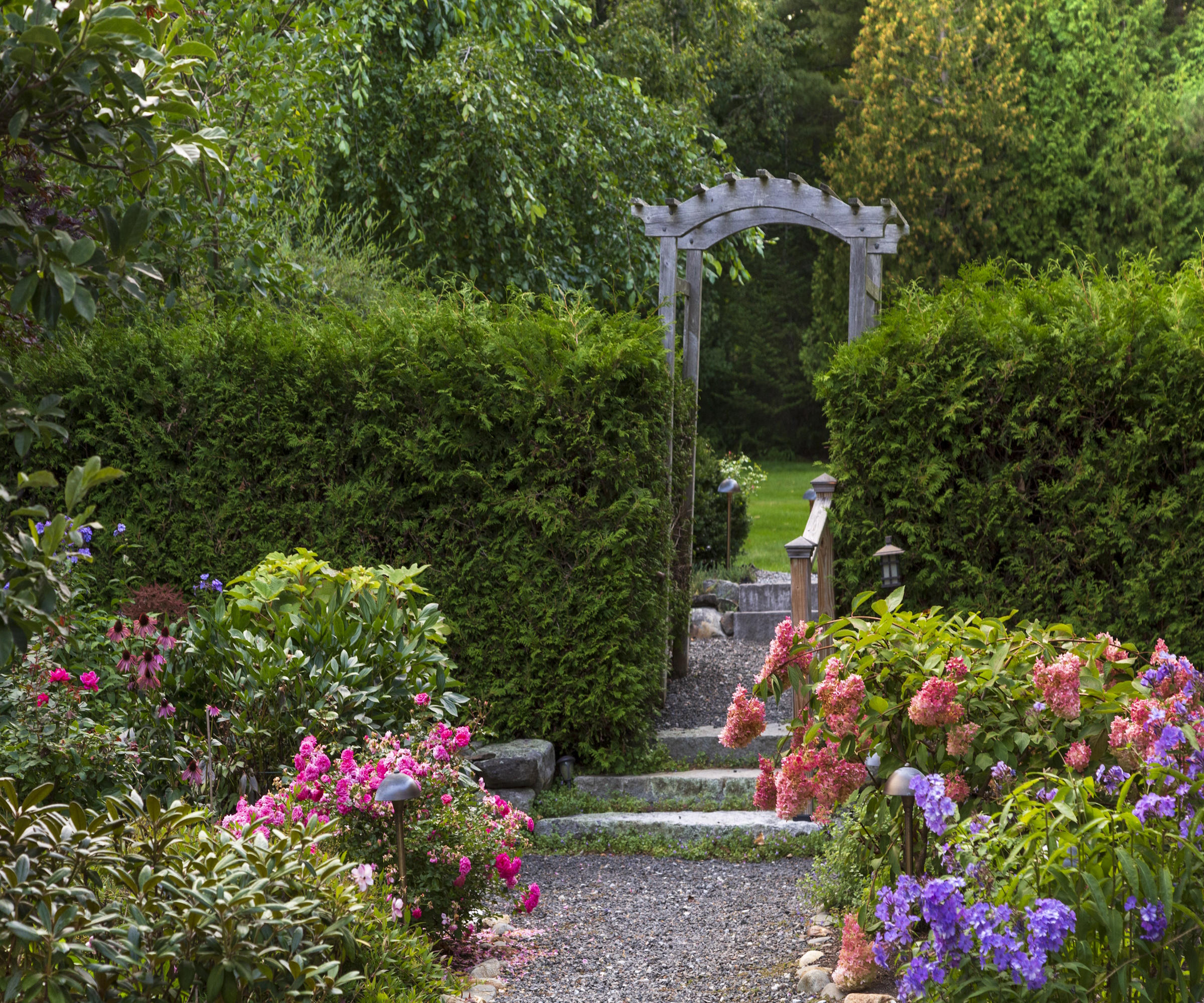
11 expert ways of landscaping with hedges
Beautiful in every season, whether as a backdrop to flowers in summer, or providing an architectural quality in winter, the best hedging plants are hugely versatile.
Garden designers will often use hedges rather than walls to create the 3D framework of a garden. They're softer and many are also beneficial to wildlife as they provide shelter, food and nesting opportunities.
1. Smarten up your front yard with a clipped hedge
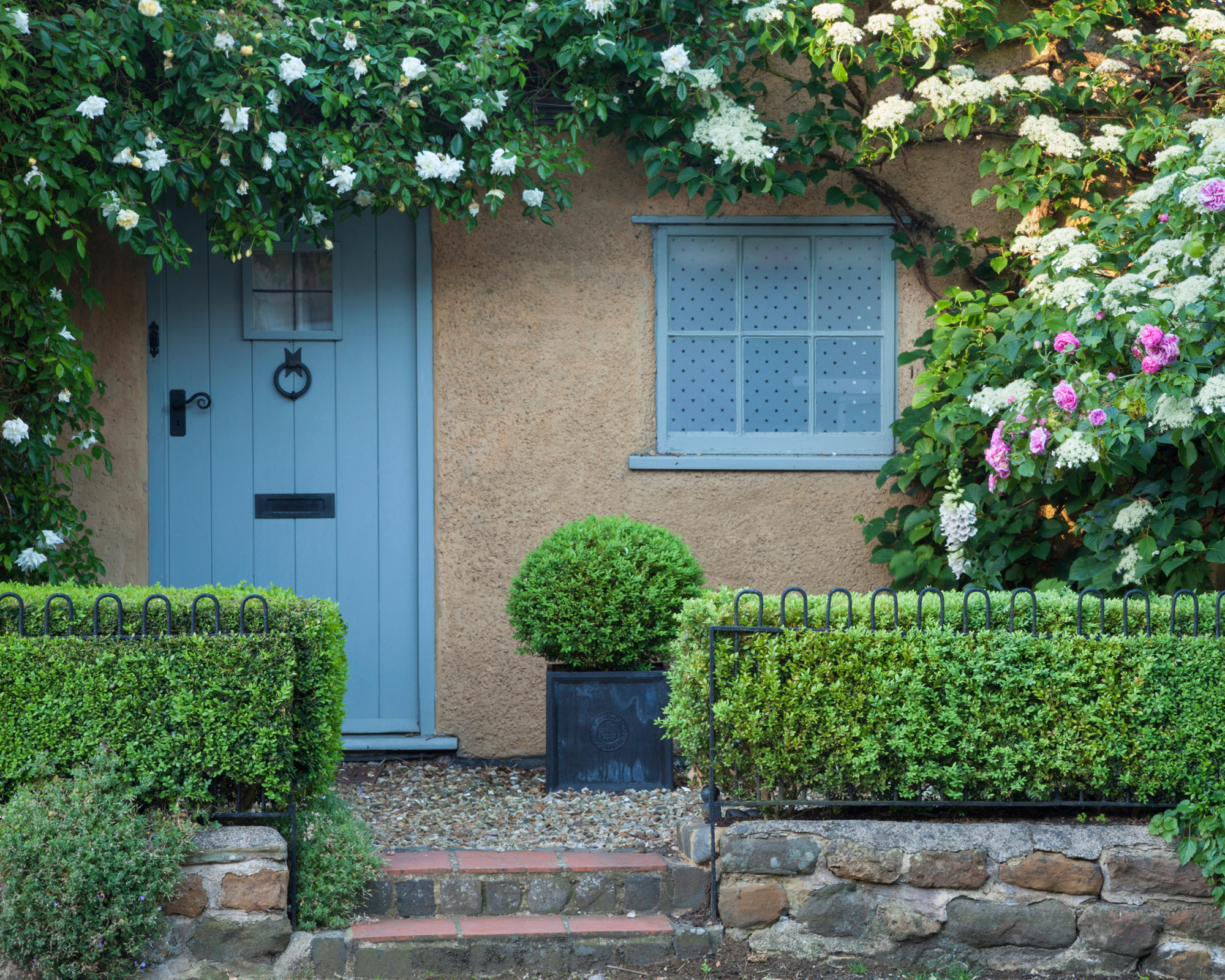
Smart hedges play a strong supporting role by adding contrasting structure to a riot of blooms
Including smart clipped hedges as part of your front yard landscaping ideas will help to frame the entrance to your house. Choose varieties that look good all year round, are multi-purpose and need only a light snipping to keep them tidy.
A variety of hedge that ticks all the boxes is the classic privet - one of the best front yard hedges for privacy. It's tough, easy to grow and easy to keep in check. Another option is boxwood. Plant it as either a low hedge, to edge the path to your door, or to plant up in containers for the porch. It also works as a boundary if you choose taller varieties.
Design expertise in your inbox – from inspiring decorating ideas and beautiful celebrity homes to practical gardening advice and shopping round-ups.
You can find a variety of different privet hedges available at Fast Growing Trees.
Landscaping with boxwood works whether you like classic or contemporary designs, so it's a super-easy choice.
2. Use hedges to create privacy for a pool area
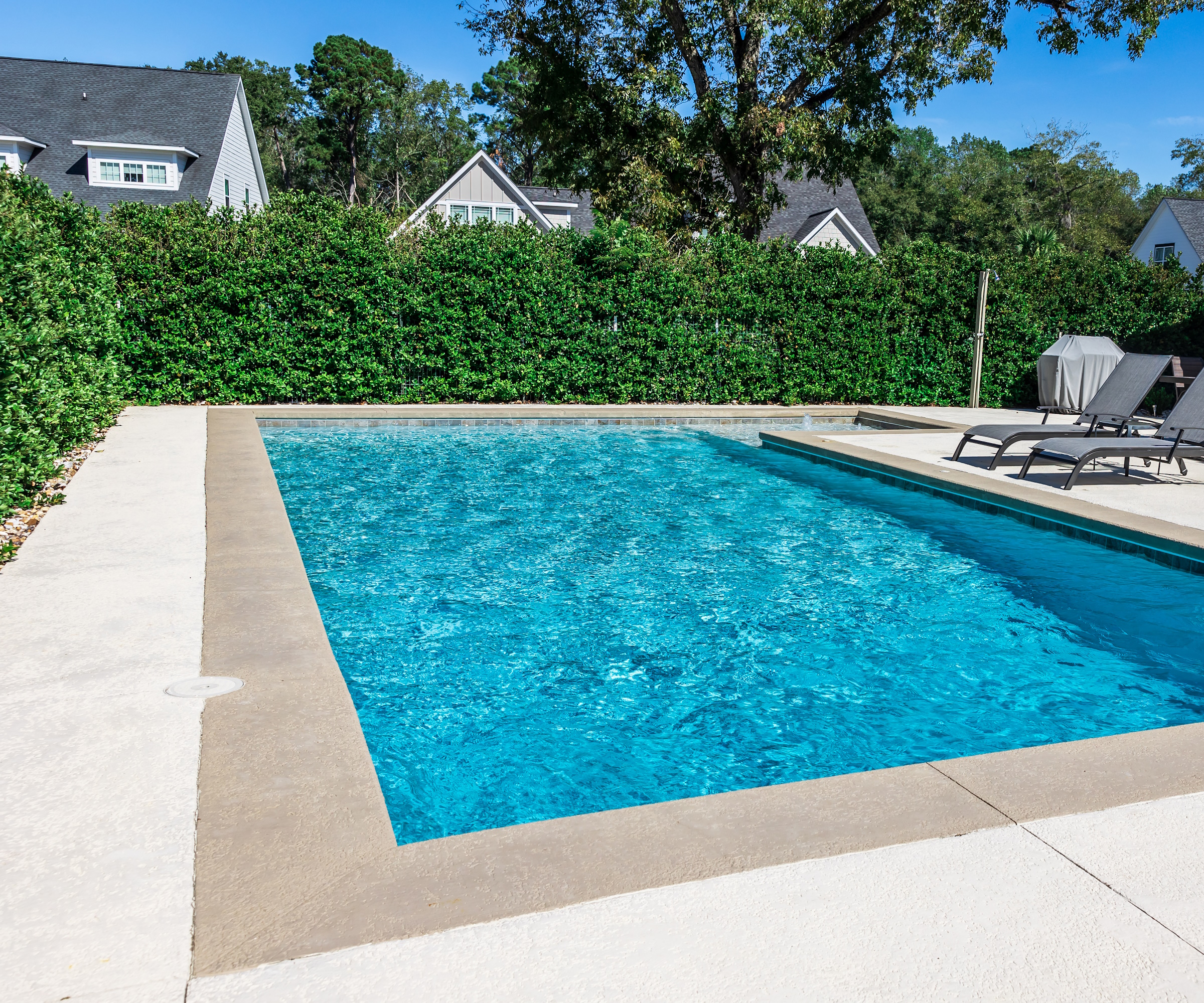
Tall hedges will help to screen a private pool space
Some of our favorite pool landscaping ideas are when the pool slots into the overall landscape, blending seamlessly into the wider space. In a modernist garden design, clipped hedges can provide a simple screen that complements the horizontal expanses of paving, lawn and water while at the same time helping to create a private and secluded space.
A clipped hedge works well in combination with a flat water surface, so this is something to consider for other water feature ideas, whatever the size of your space.
3. Zone small spaces with mini hedges
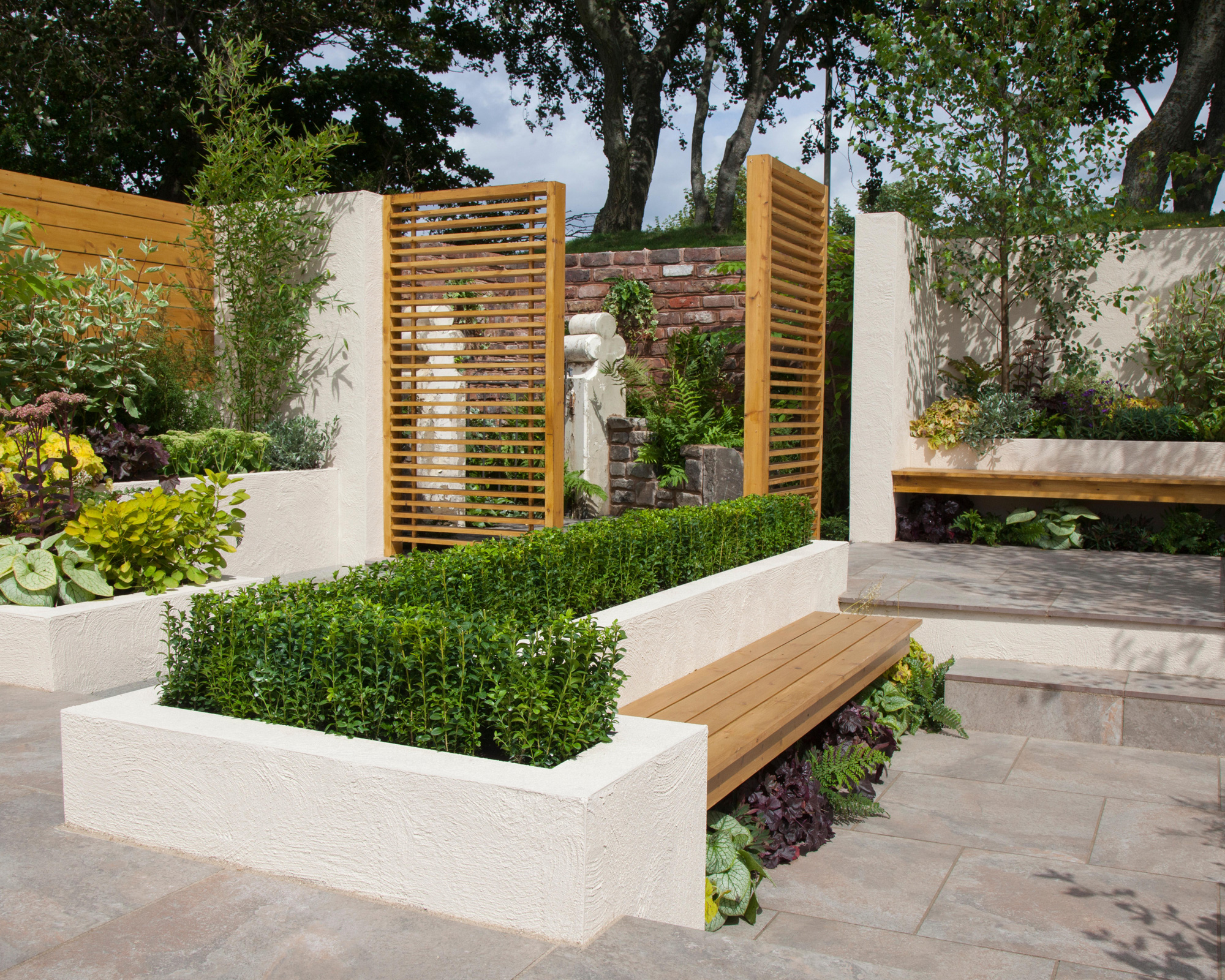
This contemporary courtyard features raised borders planted with hedging, and louvered wooden gates to further divide the space
Space is at a premium in urban gardens, so natural features such as hedges need to be smaller too if they're to be incorporated into our smaller plots. Try planting a low hedge in a wall and use it for dividing up your outdoor space to add interest to a patio or other seating area as part of your small backyard layout ideas.
'Instant hedging, especially in its more diminutive form, can work really well in courtyard gardens or rooftop spaces,' says Rachel Bull, Head of Gardens at H&G. 'Even a small ready-grown hedge adds immediate landscape maturity and an instantly softer, more natural appeal to an urban yard.
'There are lots of options for fast-growing hedges, such as hawthorn, lilac, or even lavender, if you want to create a boundary or zone a space quickly,' continues Rachel, 'just remember to take note of the eventual height and spread of your chosen plant to make sure it won't end up taking over your space.'
You can find plenty of lavender options, including this English 'munstead' lavender, at Nature Hills.

Rachel is a gardening writer, flower grower and floral designer. Her journalism career began 15 years ago on Country Living magazine, sparking a love of container gardening and wild planting. After more than a decade writing for and editing a range of consumer, business and special interest titles, Rachel became editor of floral art magazine The Flower Arranger. She then trained and worked as a floral designer and stylist in London before joining the Homes & Gardens team.
4. Double up by layering different hedge plants
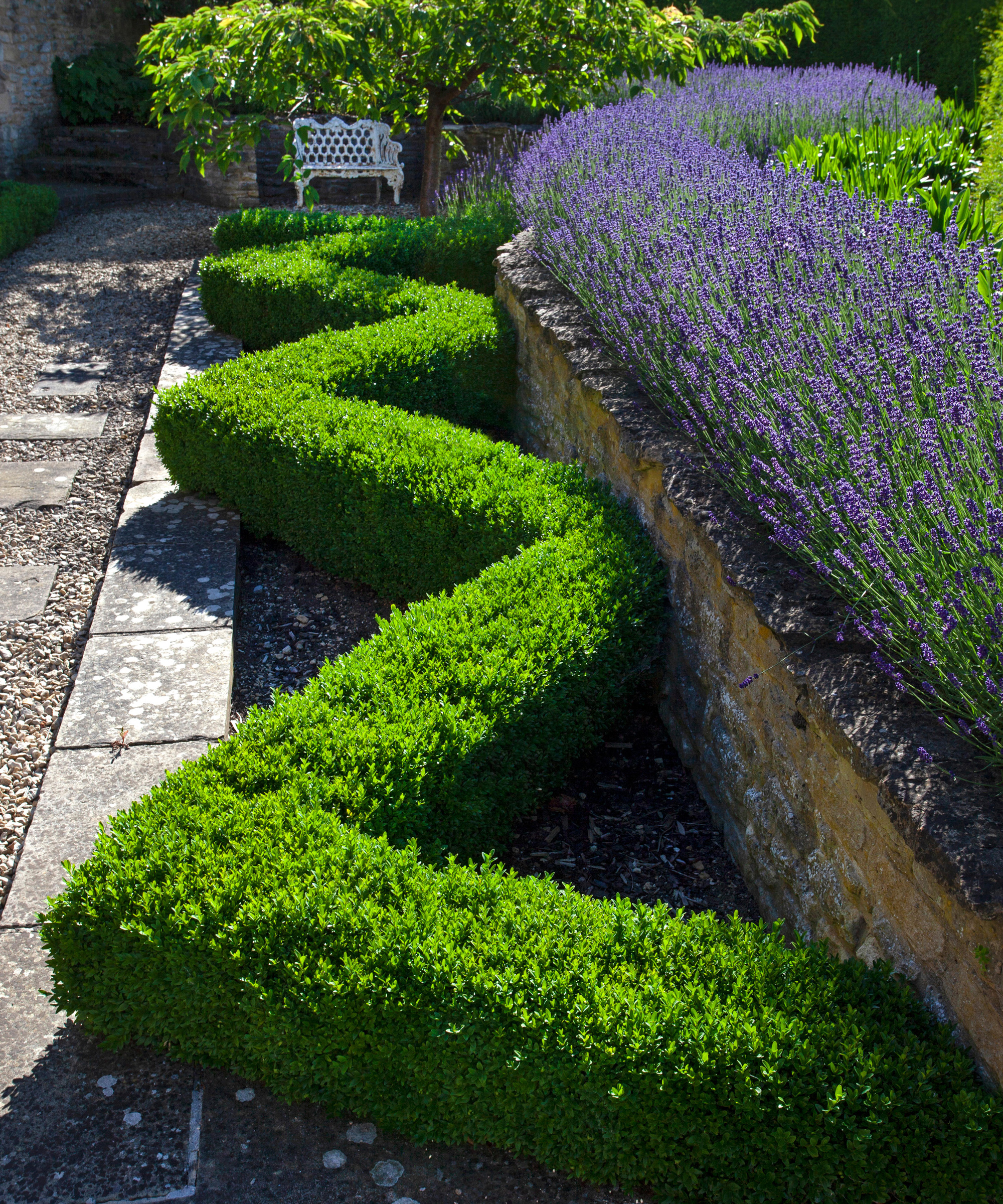
What's not to love about the combination of creative clipping and a lavender hedge
Sometimes it's nice to think outside the box and come up with something different when landscaping with hedges. Try using interesting clipped shapes and fragrant planting, and even better if you combine them to layer up a look that's unique to your yard.
Use instant box hedging to recreate the look of a zigzag hedge like this one. Instant hedge plants are grown in troughs that are regularly clipped to shape as they grow. When you buy them they're already knitted together to form a complete, ready-made hedge with an established look. Another plus is that instant hedges can be planted all year round for immediate impact.
There is a vast range of boxwood hedging and shrubs available at Fast Growing Trees.
5. Pair a flowering hedge with a picket fence
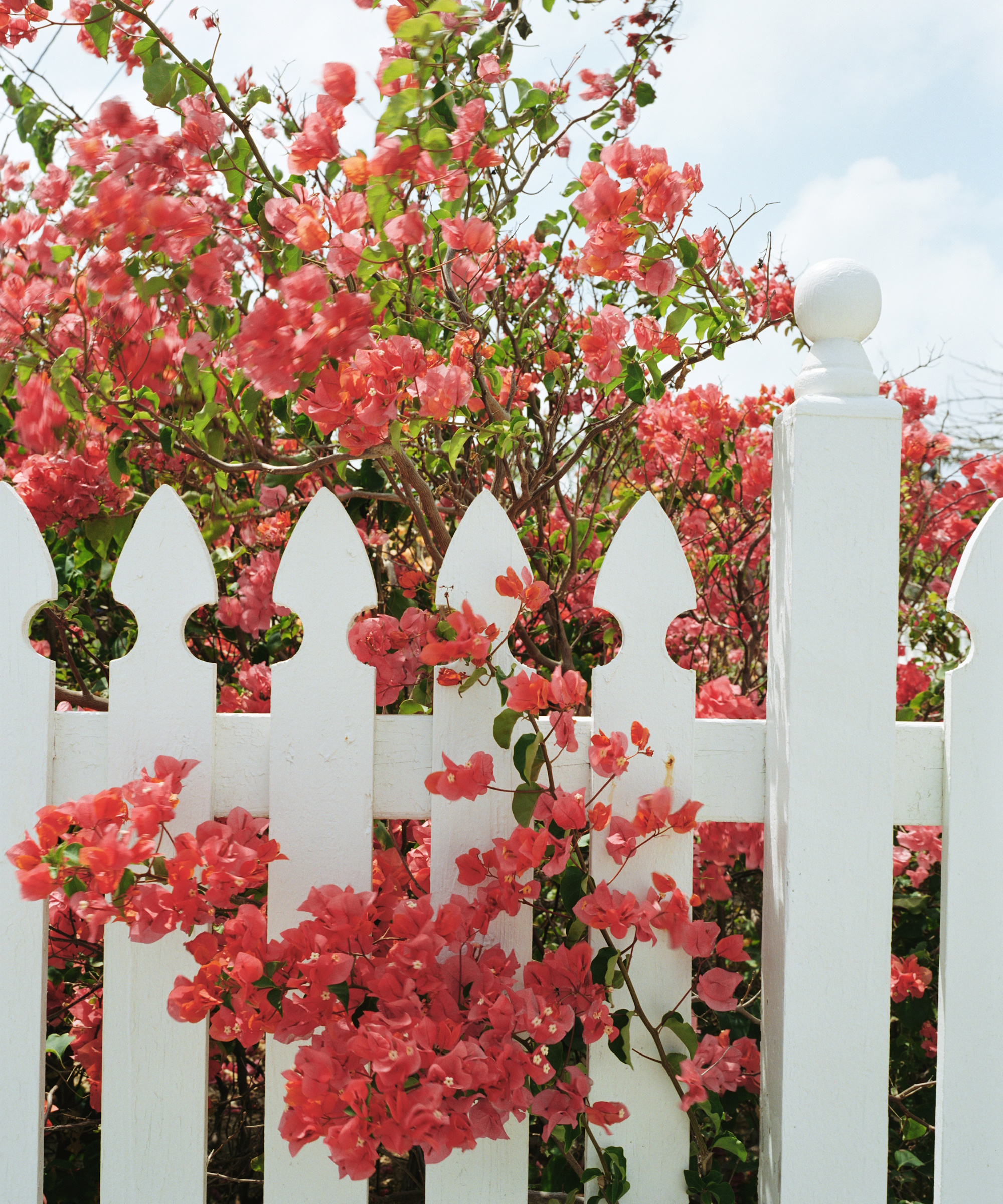
Bougainvillea blooms look stunning through a white picket fence
The combination of a flowering hedge and a picket fence makes a magical addition to the garden. Bougainvilleas are adorned with blooms in the summer months, and can work very well as a hedge plant. Another good option is weigela Florida 'Pink Princess'. Both would suit informal hedge planting and will grow up to six feet tall.
Prune weigela right after the flowers fade to keep it at the height you want but go easy as this one works best left a little on the wild side. Shear it too hard and you will ruin the elegant fountain-like habit of the lovely arching branches with their profusion of beautiful pink tubular flowers.
6. Use hedging in a courtyard garden
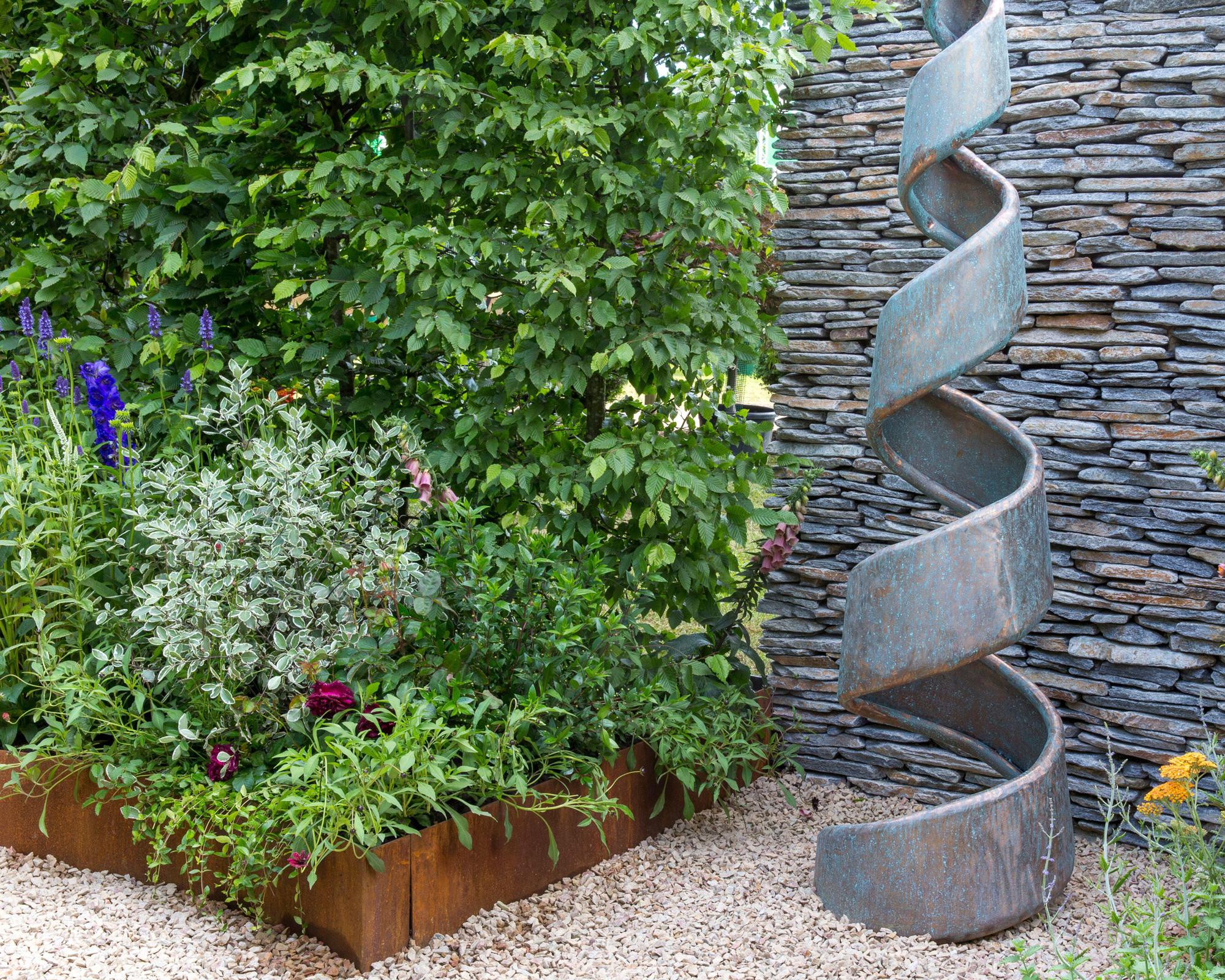
This small courtyard garden features a loose-leaved hedge that complements the dry stone wall
If you're looking for low maintenance hedge plants you can't beat hornbeam. Much loved by garden designers, it's a popular and classic hedge known for its lush, serrated leaves.
It's perfect for screening to bring privacy and security to your garden, as well as providing an effective barrier against noise and wind, making it ideal for sheltered courtyard gardens and other urban spaces.
American hornbeam is a beautiful native variety and is available from Nature Hills.
7. Plant ornamental grasses in hedge donuts
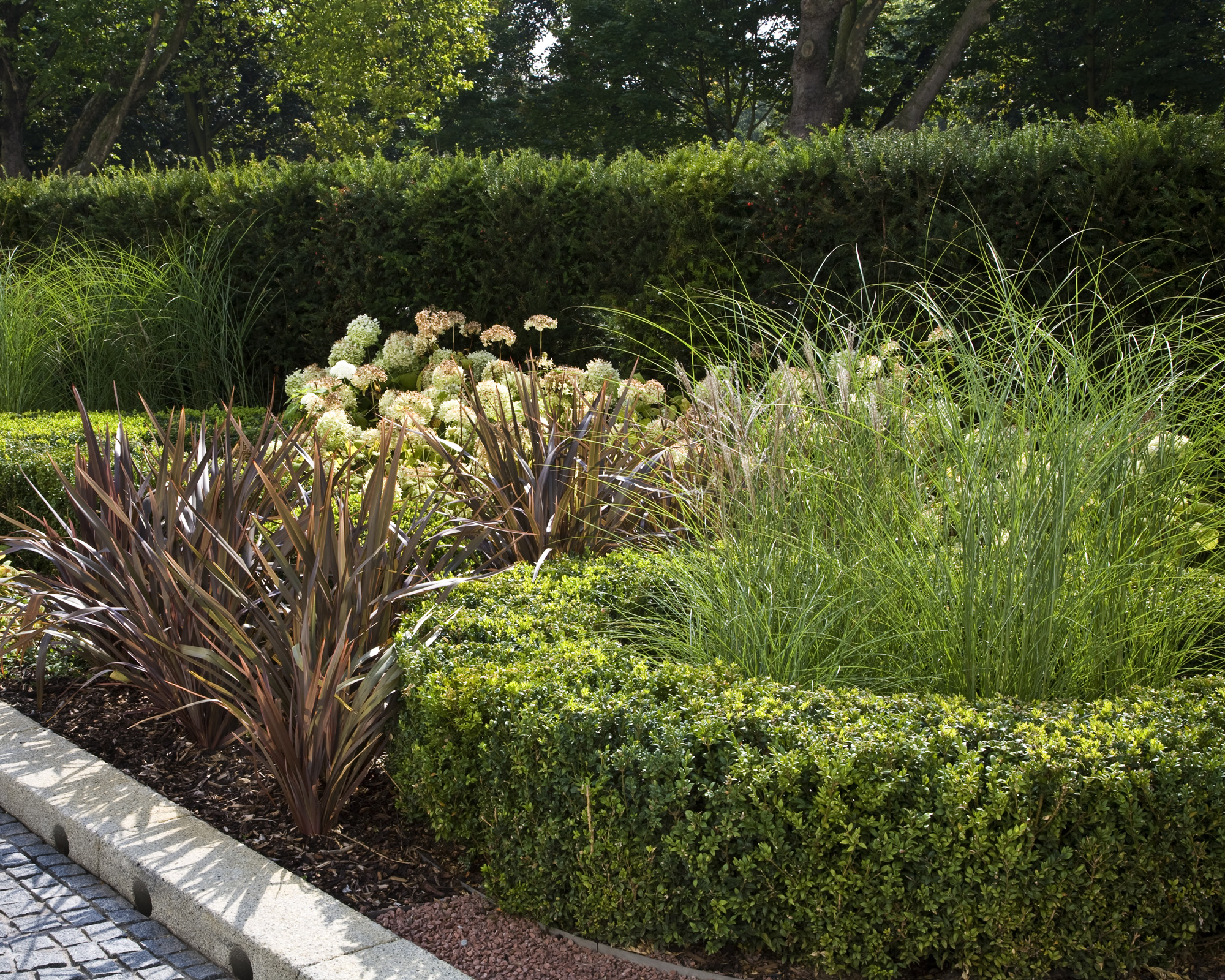
This circular hedge introduces structure to the planting
This design takes its inspiration from 18th century parterres, but with a strong contemporary twist. It's a modern interpretation of a parterre - part of a formal garden consisting of symmetrical patterns - in a design that ripples and swirls.
It shows how landscaping with hedges can be used in a different way to the standard role of screening and boundaries. Here hedging is interspersed with perennials to create plenty of year-round interest as well as bringing a new twist to landscaping with grasses.
8. Screen a vegetable garden with hedging
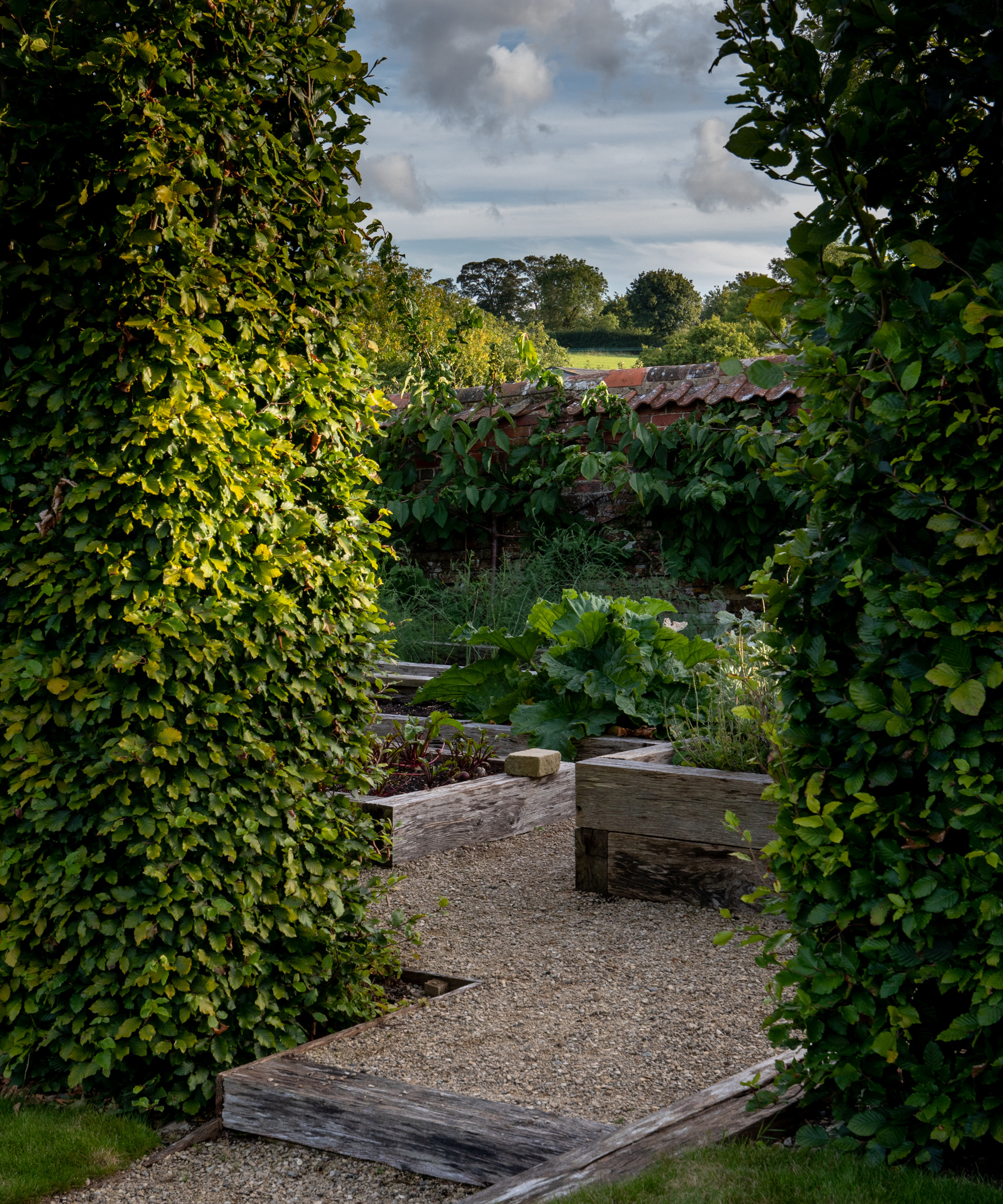
The idea of a separate vegetable garden is always lovely if you have the space
If you love the idea of a separate area to grow vegetables, it can be a good idea to screen your kitchen garden with hedging to create a sense of enclosure. As well as providing a more sheltered space for your crops to grow it will act as a magnet for wildlife too.
'Beech (or hornbeam if the conditions aren’t suitable for beech) makes a great deciduous hedge,' says Rachel Bull. 'Though the leaves turn orange and brown in fall, beech will retain its leaves for a lot of the winter, offering continued shelter and structure, with an attractive variation in color.'
It's also worth learning how to trim a hedge properly so that you can keep these boundaries looking neat and under control all year round.
9. Edge flower beds with low hedging
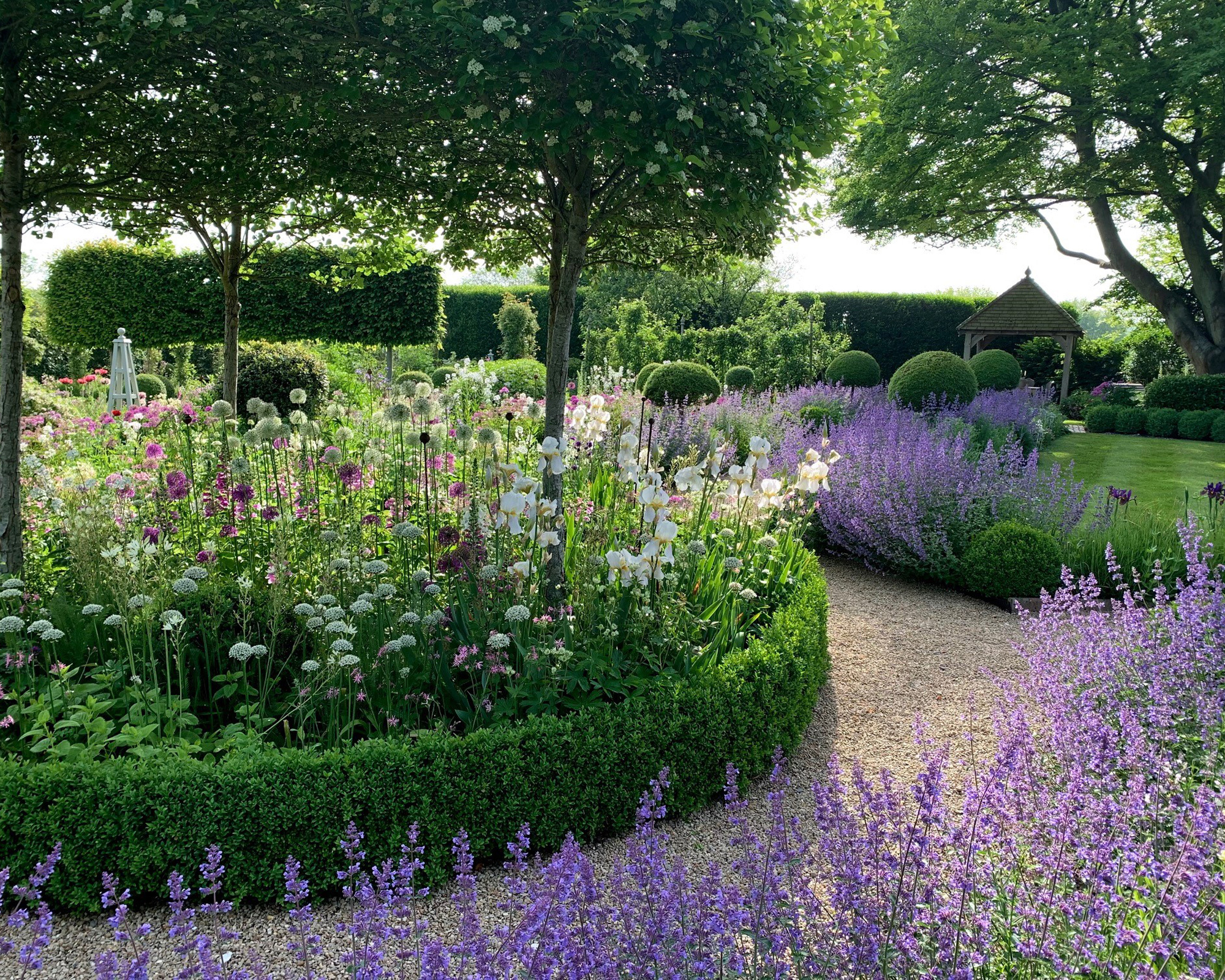
This garden in Wiltshire, England, uses the prettiest combination of smart low hedging with unstructured perennial planting
This garden’s design is based on curves, circles, globes, spheres and balls, and all of these ideas can be used when landscaping with hedges. The central round planting bed shown here is the very heart of the garden and all curves ripple out from this point.
This circular bed of low box hedging contains several hawthorn trees Crataegus prunifolia, which have been cloud pruned to float above the plants below. Offering a long season of interest, this small deciduous tree carries clusters of white flowers in late spring and early summer, followed by bright red fruit. The planting plan itself is built around a color palette created from drifts of allium 'Purple Sensation' and white 'Mount Everest'.
Small hedge details are a useful addition to a planting border because they add a degree of permanence and a change of character to the looser planting. Short, shrubby evergreen hedges at the front of a border act as a foil to perennials that come and go.
10. Create a secluded seating spot with hedges

Short box hedges create defined shapes and help to enclose the bench
Hedges are a key planting feature in more formal garden designs, helping to define space or views, or add a feeling of enclosure, while dwarf hedging can be used for garden edging ideas or form knot gardens. This balanced design is often achieved through symmetry and a clear layout.
Hedging also provides shelter and increases privacy to create quiet places to sit, and by landscaping with evergreens you can create a space that remains secluded all year round.
11. Plant a series of tiered hedges to flank steps
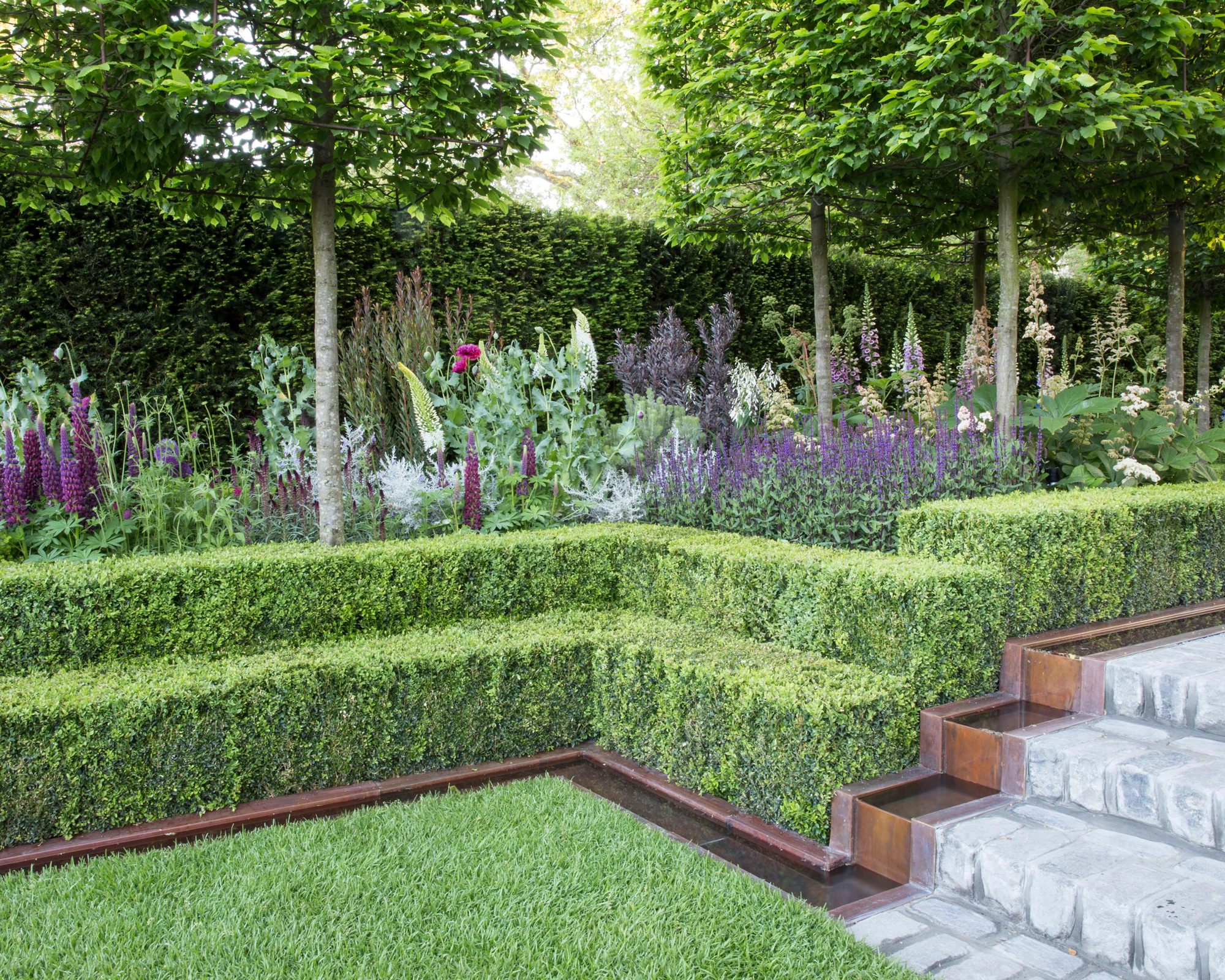
A living wall with a difference
This is a modern spin on traditional formal style, which uses landscaping with hedges in a really creative way. Layers of clipped box walls help to define the symmetry, while cottage-style planting softens the lines.
Clipped hedging, typically box or yew for evergreen structure, is used here to help define the space. Topiary provides architectural definition, and dwarf box hedges are used to form interesting patterns.
There are so many wonderful reasons to landscape with hedges in your front or backyard. There are lots of lovely options if you are searching for the best hedges for wildlife, or for flowering hedges, to add more color into your boundaries and structures.

Lifestyle journalist Sarah Wilson writes about garden design and landscaping trends for Homes & Gardens. She has studied introductory garden and landscape design, and also has an RHS Level 2 qualification in the Principles of Plant Growth and Development. She is a regular contributor to Homes & Gardens and Livingetc. She has also written for Country Living, Country Homes & Interiors, and Modern Gardens magazines